Photographs: Pichi Chuang/Reuters
From genetically engineered angelfish to asteroids trips to revealing the God particle, science evolved further in 2010. Let's take a look at some of the advances in science
Genetically engineered angelfish (Pterophyllum) glow in a tank under a blacklight, at a fish farm in Pingtung, southern Taiwan. The fish are the world's first fluorescent angelfish which were created by a joint project between Taiwan's Academia Sinica and Jy Lin, a private biotechnology company. The breed is the largest fluorescent fish in the world, which are able to mate and reproduce.
Click on NEXT for MORE...
Genetically engineered angelfish (Pterophyllum) glow in a tank under a blacklight, at a fish farm in Pingtung, southern Taiwan. The fish are the world's first fluorescent angelfish which were created by a joint project between Taiwan's Academia Sinica and Jy Lin, a private biotechnology company. The breed is the largest fluorescent fish in the world, which are able to mate and reproduce.
Click on NEXT for MORE...
The year 2010 in Science
Photographs: Gerardo Garcia/Reuters
The lights of an approaching plane are pictured as a meteor streaks past stars in the night sky, on the outskirts of Cancun, August 13, 2010. Picture taken using a long exposure
The year 2010 in Science
Photographs: NASA/Handout/Reuters
The eye of Hurricane Earl in a photo taken from the International Space Station, August 30, 2010. At the time Earl was centered just north of the Virgin Islands.
Hurricane Earl crept past the Maryland-Delaware coast in September. The storm gained Category 4 strength while spinning around in the Atlantic, but the area felt little impact, as Earl had been downgraded to Category 1 by the time it neared the coast.
Hurricane Earl crept past the Maryland-Delaware coast in September. The storm gained Category 4 strength while spinning around in the Atlantic, but the area felt little impact, as Earl had been downgraded to Category 1 by the time it neared the coast.
The year 2010 in Science
Photographs: ISS Crew Earth Observations/Johnson Space Centre/Handout
The aurora australis image during a geomagnetic storm that was most likely caused by a coronal mass ejection from the Sun, May 29, 2010. The photo was taken from the International Space Station located over the Southern Indian Ocean. While the dominant coloration of the aurora is green, there are faint suggestions of red left of image centre.
The year 2010 in Science
Photographs: Denis Balibouse/Reuters
A scientist holds a glass of champagne on March 30 after scientists at the Large Hadron Collider, the world's biggest atom smasher, at the European Nuclear Research Organisation (CERN) successfully collided protons at nearly the speed of light, creating mini-versions of the Big Bang that gave birth to the universe.
The experiment that recreated the conditions similar to conditions right after the Big Bang will help scientists evaluate the state of matter in that exact moment, took place in the LHC's 27 km tunnel about a hundred metres below the ground. Analysis of data could lead to the discovery of the Higgs Boson, also called the 'God particle,' which is believed to have existed when the universe was born.
The experiment that recreated the conditions similar to conditions right after the Big Bang will help scientists evaluate the state of matter in that exact moment, took place in the LHC's 27 km tunnel about a hundred metres below the ground. Analysis of data could lead to the discovery of the Higgs Boson, also called the 'God particle,' which is believed to have existed when the universe was born.
The year 2010 in Science
Photographs: Reuters
The Long March 3C rocket carrying China's second unmanned lunar probe, Chang'e-2, lifts off from the launch pad at the Xichang Satellite Launch Center, Sichuan Province, October 1.
Chang'e-2 is part of China's three-phase space program that aims to land an astronaut on the moon around 2020. The Chang'e-2 mission has reportedly cost 900 million Yuan (134 million dollars), much less than that of Chang'e-1 that had cost 1.4 billion Yuan
Chang'e-2 is part of China's three-phase space program that aims to land an astronaut on the moon around 2020. The Chang'e-2 mission has reportedly cost 900 million Yuan (134 million dollars), much less than that of Chang'e-1 that had cost 1.4 billion Yuan
The year 2010 in Science
Photographs: JAXA/Handout/Reuters
A worker secures the Japanese Hayabusa Sample Return Capsule (SRC) at Woomera rocket range in the Australian outback, June 14, 2010 handout photo. The capsule landed in the Australian outback after a seven-year voyage to an asteroid named Itokawa.
The samples collected by Hayabusa were in the form of tiny dust grains collected directly from the asteroid. About 1,500 grains were identified as rocky particles, and most of them were judged to be of extraterrestrial origin. Itokawa is a silicon-rich asteroid about 1,755 feet (535 meters) long at its longest side. It takes about 556 days to complete one orbit around the sun.
The samples collected by Hayabusa were in the form of tiny dust grains collected directly from the asteroid. About 1,500 grains were identified as rocky particles, and most of them were judged to be of extraterrestrial origin. Itokawa is a silicon-rich asteroid about 1,755 feet (535 meters) long at its longest side. It takes about 556 days to complete one orbit around the sun.
The year 2010 in Science
Photographs: Tyrone Siu/Reuters
China's first cloned pig, stuffed and displayed, is seen in front of a researcher working at the Beijing Genomics institute in Shenzhen, July 23. Beijing Genomics institute has set up a unit to commercialise cloning and expects that meat from the offspring of cloned pigs will be on the Chinese market in 'a few years'. Recently, Chinese scientists completed sequencing of the genomes of two endangered species -- the panda and the Tibetan Antelope.
The year 2010 in Science
Photographs: NASA/Bill Ingalls/Handout/Reuters
The Soyuz capsule lands near the town of Zhezkazgan, in Kazakhstan. The spacecraft had two Americans and a Russian from the International Space Station, on board. Three crew members remain on the space station -- American Scott Kelly and Russians Alexander Kaleri and Oleg Skripochka. The blasted off in early October for a five-month mission.
The year 2010 in Science
Photographs: Eliseo Fernandez/Reuters
The moon passes between the sun and the earth during a solar eclipse in Valparaiso City, northwest of Santiago, July 11. The effect was created by shooting part of the image through a piece of exposed X-ray film.
The year 2010 in Science
Photographs: Phil Noble/Reuters
A storage robot deposits samples in the world's largest blood and urine sample freezer at Biobank, near Manchester, northern England, March 18.
The freezer will keep 10 million samples from 500,000 people for the next 30 years. It will allow scientists to investigate the complex interaction of lifestyle and genes in the development of a large number of chronic diseases, from cancer and heart disease to dementia and depression.
The freezer will keep 10 million samples from 500,000 people for the next 30 years. It will allow scientists to investigate the complex interaction of lifestyle and genes in the development of a large number of chronic diseases, from cancer and heart disease to dementia and depression.
The year 2010 in Science
Photographs: NASA ESA and D Jewitt/Reuters
A bizarre X-pattern of filamentary structures near the point-like nucleus of an object and trailing streamers of dust, in a picture taken by the Hubble Space Telescope on January 29. Astronomers believe the comet-like object was created by the collision of two asteroids, possible siblings of the rogue rock blamed for killing the dinosaurs millions of years ago.
The year 2010 in Science
Photographs: NASA/Handout/Reuters
An extreme ultraviolet image of the sun, using false colors to trace different gas temperatures, taken by the Solar Dynamics Observatory (SDO) on March 30


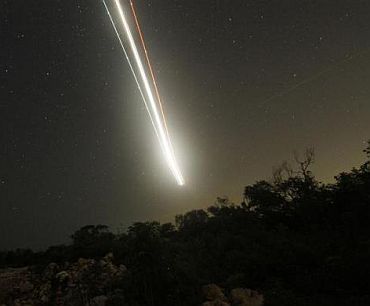

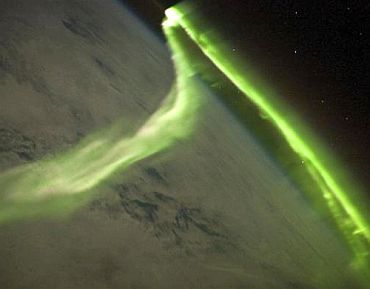
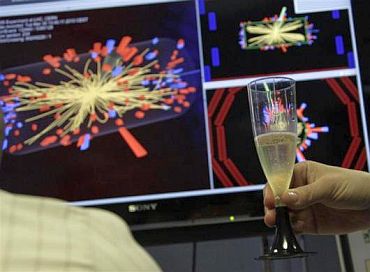

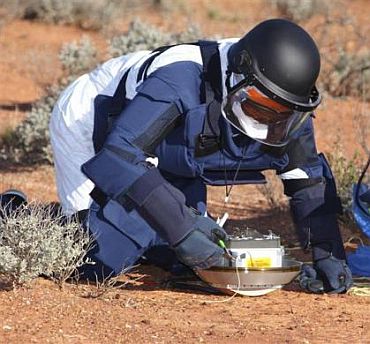

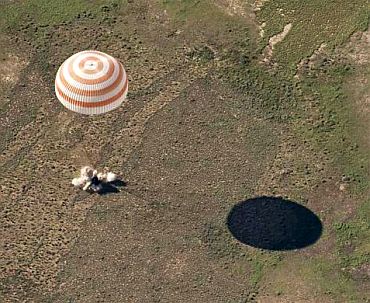


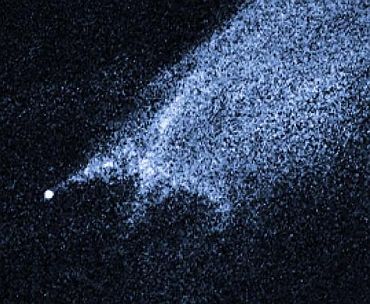
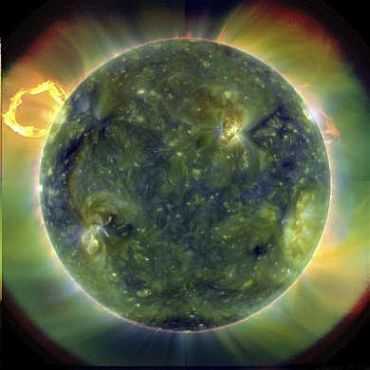
article